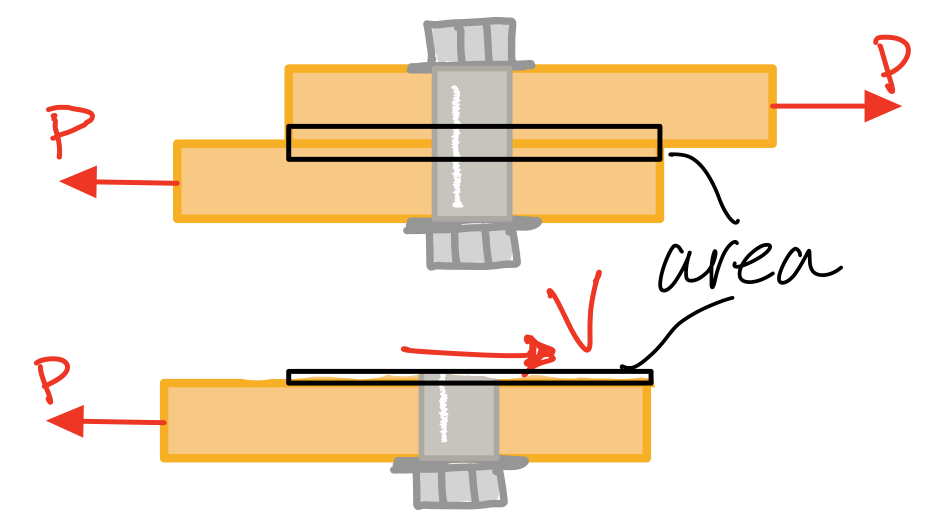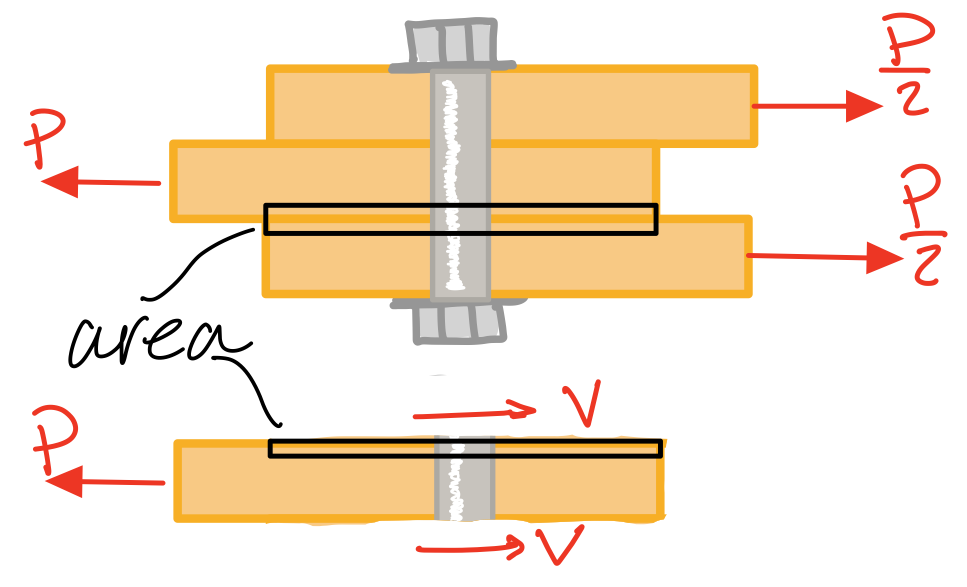Stress
The internal forces and moments generally vary from point to point. Obtaining this distribution is of primary importance in mechanics of materials. The total force in a cross-section, divided by the cross-sectional area, is the stress. We use stress to normalize forces with respect to the size of the geometry.Units
The units of stress can be found in the table below.| Measure | SI system | US system |
|---|---|---|
| Force | [\(N\)] | [\(lb\)] |
| Area | [\(m^2\)] | [\(in^2\)] |
| Stress | Pascal = [\(Pa\)] = [\(N/m^2\)] | pound per square inch = [\(psi\)] = [\(lb/in^2\)] |
| kiloPascal [\(kPa\)] | \(10^3\) [\(Pa\)] |
| megaPascal [\(MPa\)] | \(10^6\) [\(Pa\)] |
| gigaPascal [\(GPa\)] | \(10^9\) [\(Pa\)] |
- Tension:\( \sigma > 0 \)
- Compression:\( \sigma < 0 \)
Stress under general loading conditions
We consider a homogeneous distribution of the internal force \( \Delta F \) over an infinitesimal area \( \Delta A \). The stress is defined by the infinitesimal force divided by the infinitesimal area.- Normal Stress: Defined by the intensity of the force acting NORMAL to \( \Delta A \)
- Shear Stress: Defined by the intensity of the force acting TANGENT to \( \Delta A \)
Average Normal Stress - Axial Loading

Normal stress
Average normal stress. #avn-sts
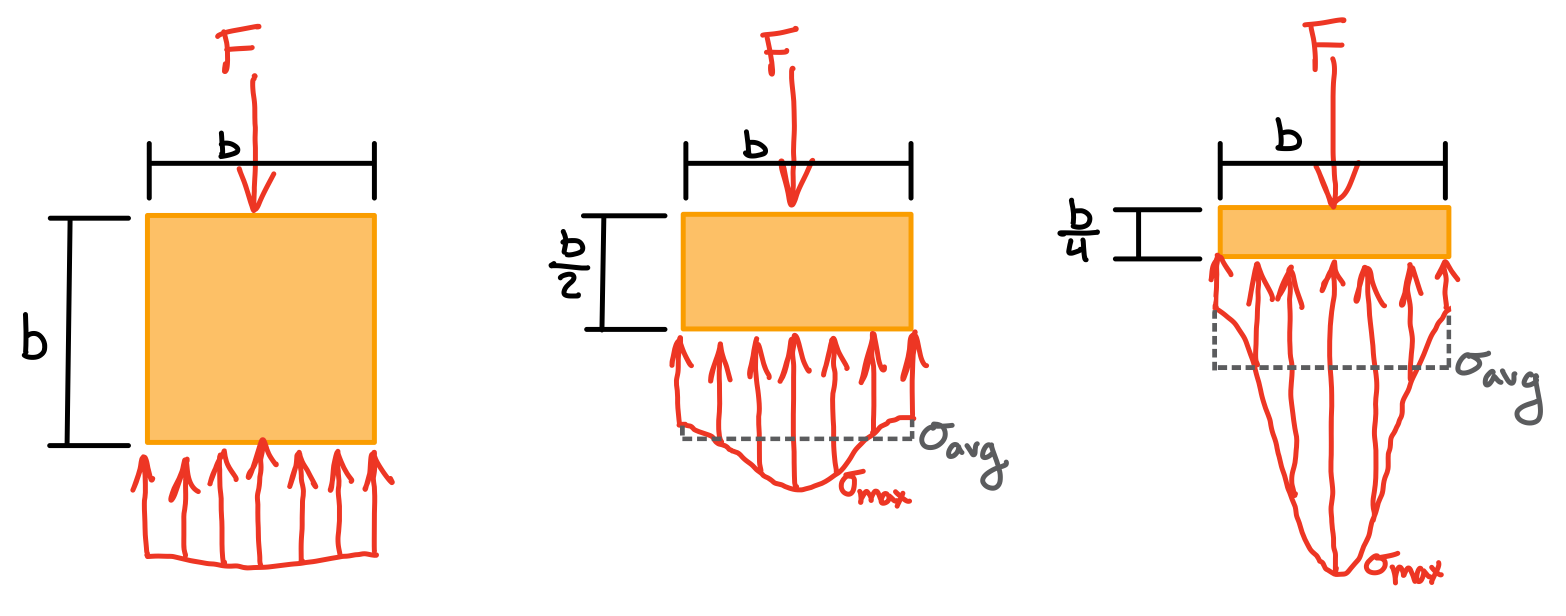
Non-uniform stress distribution
Average Shear Stress
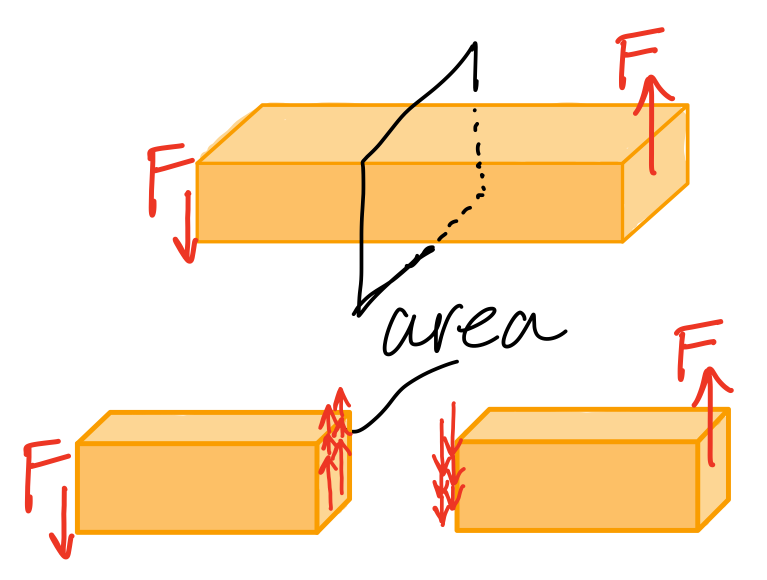
Shear stress

Average shear stress
Average shear stress. #avs-sts
Example Problem: Single shear: determine the shear stress in the bolt #sgl-shr
Example Problem: Double shear: determine the shear stress in the bolt #dbl-shr
Extra!
Supplemental video:
Stress Tensor

Stress element
The components of normal and shear stress can be combined into the stress tensor. This is a symmetric matrix representing the state of stress with respect to three directions.
Stress tensor.
- Three normal stress components: \( \sigma_x, \sigma_y, \sigma_z \)
- Six shear stress components: \( \tau_{xy} =\tau_{yx}, \tau_{xz}=\tau_{zx}, \tau_{yz}=\tau_{zy} \)
Heads up!
Stress tensor builds on this content later in the course.
Learn more about this topic on the Stress Transformation page.
Support Reactions
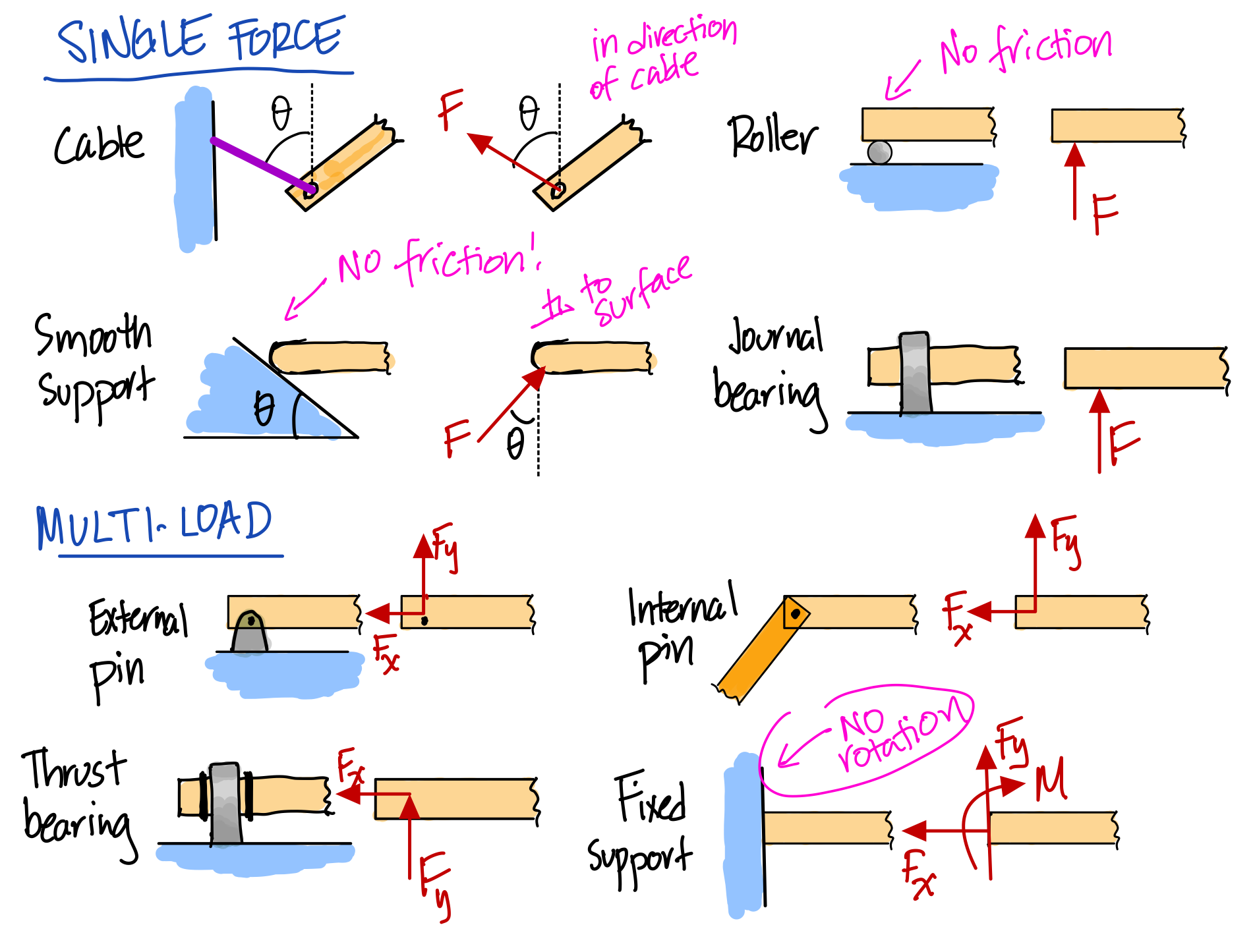
Support reactions
Allowable Strength Design
Design Requirement: A structural design is intended to support and/or transmit loads while maintaining safety and utility: don't break. Strength of a structure reflects its ability to resist failure.- Ultimate load ( \( P_u \) ): force when specimen fails (breaks).
- Ultimate normal stress ( \( \sigma_u \) ): stress when a specimen fails (breaks).
Ultimate normal stress
Factor of Safety (FS): Ratio of structural strength to maximum (allowed) applied load (\( P_{all} \)).
Maximum allowed applied load.
Maximum allowed applied stress.
